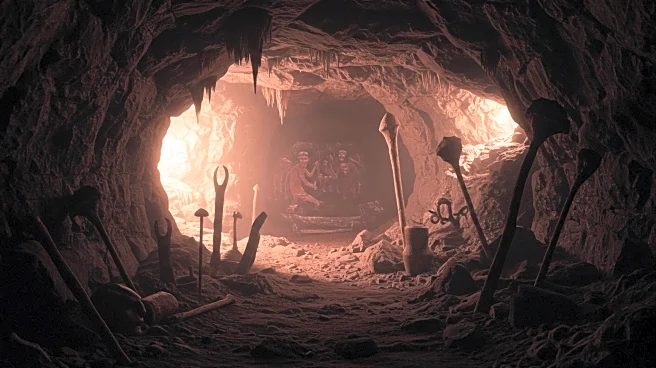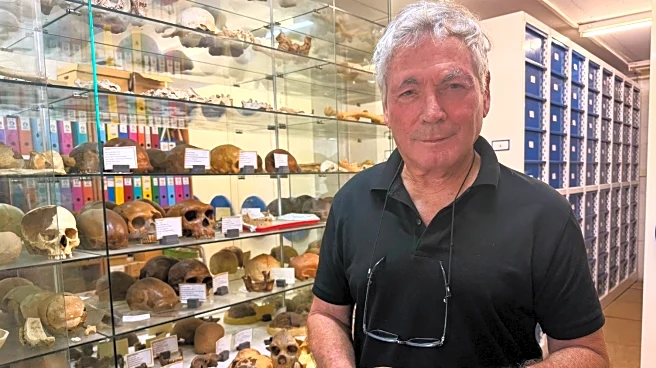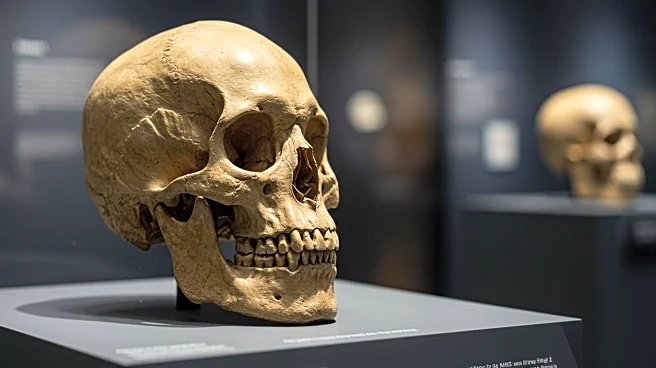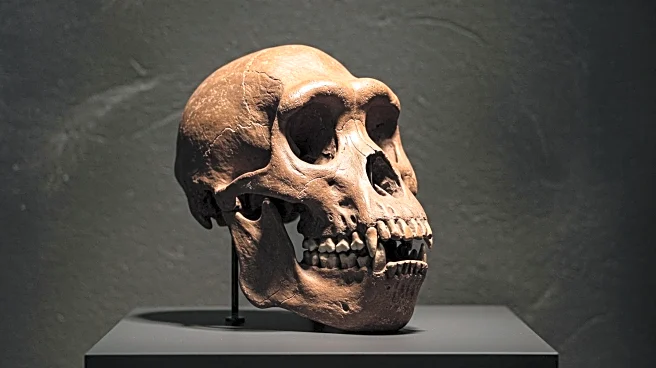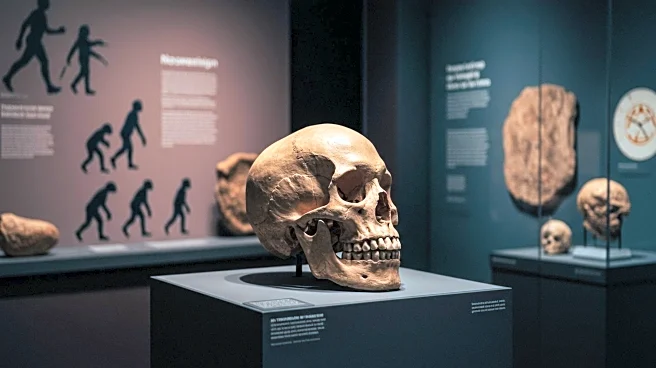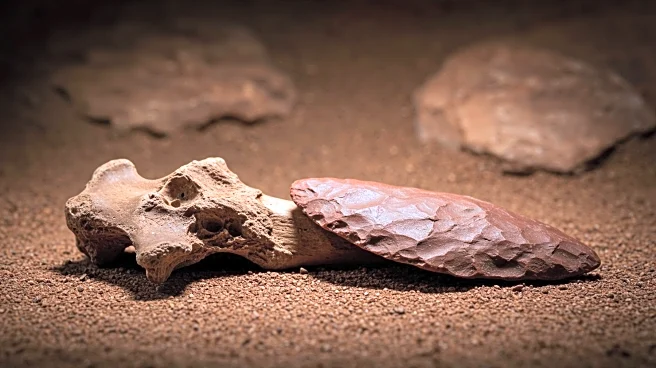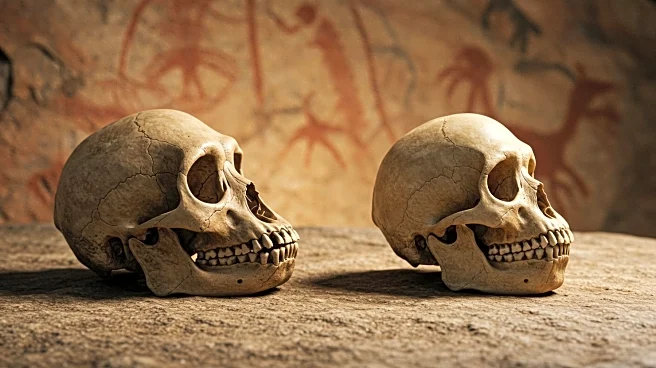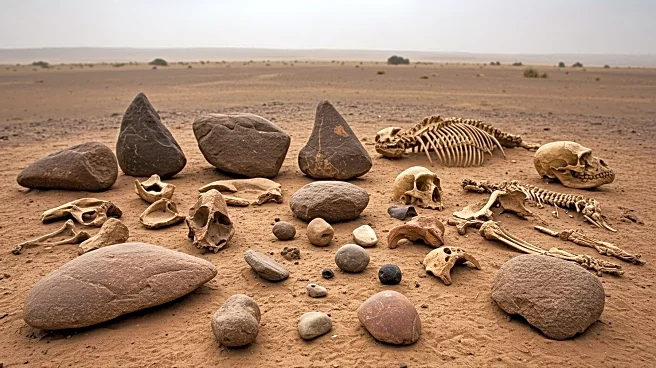What's Happening?
Recent research has unveiled a comprehensive history of Denisova Cave, highlighting the presence of Denisovans, a previously unknown hominin lineage. The study, led by Zenobia Jacobs and an international team, utilized cave sediments, ancient proteins, and high-resolution timelines to map the Denisovan presence over hundreds of thousands of years. In 2010, mitochondrial DNA extracted from a finger bone in Denisova Cave revealed a lineage distinct from modern humans and Neanderthals. Subsequent nuclear DNA analysis confirmed Denisovans as sister groups to Neanderthals, with genetic contributions to Melanesians. The discovery of the Xiahe mandible in 2019 further expanded the Denisovan range, placing them at high altitudes on the Tibetan Plateau 160,000 years ago. Additional finds, such as a jaw near Taiwan and a tooth in Laos, suggest Denisovan presence across East Asia.
Why It's Important?
The findings from Denisova Cave are significant as they reshape the understanding of human evolution and migration patterns. Denisovans, closely related to Neanderthals, adapted to diverse environments, from Siberia to Southeast Asia. Their genetic contributions to modern humans, particularly in Melanesia, highlight the complex interactions between ancient hominin groups. The research underscores the importance of advanced methods like DNA extraction from soil and proteins in reconstructing hominin histories. This knowledge not only enriches the narrative of human ancestry but also informs studies on genetic traits, such as high-altitude adaptation, that continue to impact human health today.
What's Next?
Future research may focus on further exploring the Denisovan presence in East Asia, examining additional fossils and genetic evidence. The debate over the classification of certain East Asian fossils, such as the Harbin skull, may lead to new insights into Denisovan populations. Continued advancements in genetic and sediment analysis techniques will likely refine timelines and interactions between Denisovans, Neanderthals, and modern humans, offering a more detailed picture of human evolution.
Beyond the Headlines
The Denisovan discoveries challenge traditional labels in human evolution, suggesting a flexible and resilient population capable of adapting to varied climates and altitudes. Their interactions with other hominin groups reflect a dynamic Pleistocene world, where genetic exchange played a crucial role in shaping modern human diversity. The study highlights the evolving methodologies in paleoanthropology, where DNA and protein analysis complement traditional fossil studies, providing a more nuanced understanding of ancient human populations.
